Reading skills improvement Normal Alphabet Worksheets for Ages 5-9
11 filtered results
-
From - To
Enhance your child’s reading skills with our Alphabet Worksheets designed for ages 5-9. These engaging, printable worksheets are crafted to strengthen letter recognition, phonics, and early literacy. Featuring a variety of fun activities, they help children build a solid foundation for reading success. Each worksheet focuses on the normal alphabet, guiding young learners through structured practices that are both educational and entertaining. Perfect for classroom or home use, our worksheets cater to the developmental needs of children ages 5-9, fostering a love for reading right from the start! Empower your child today with these essential reading tools.
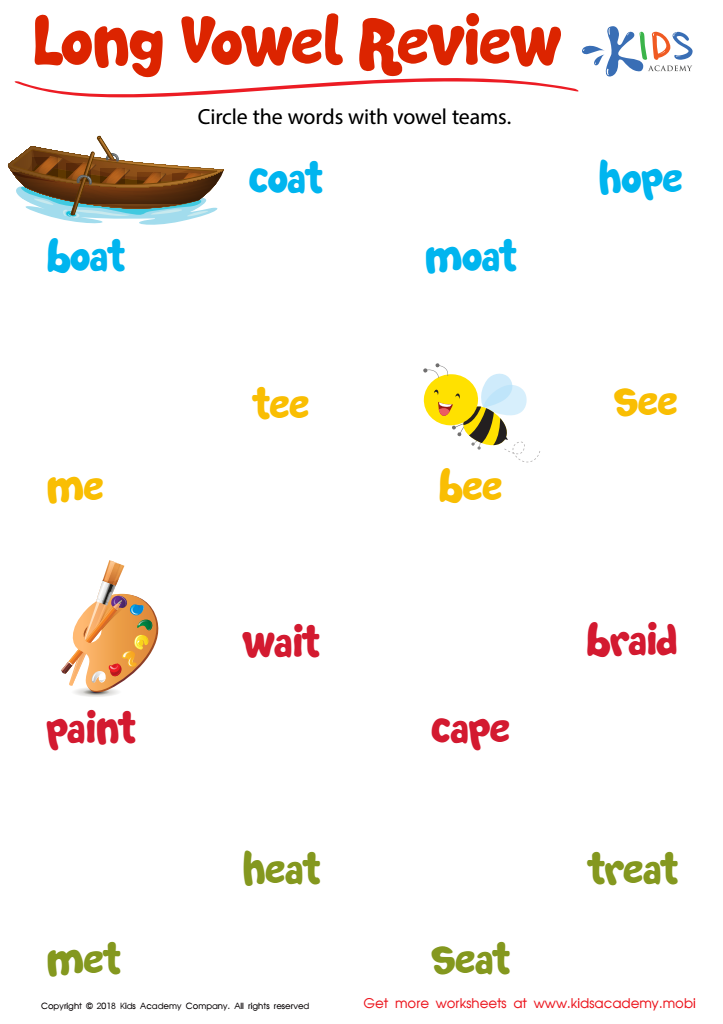

Long Vowel Review Worksheet
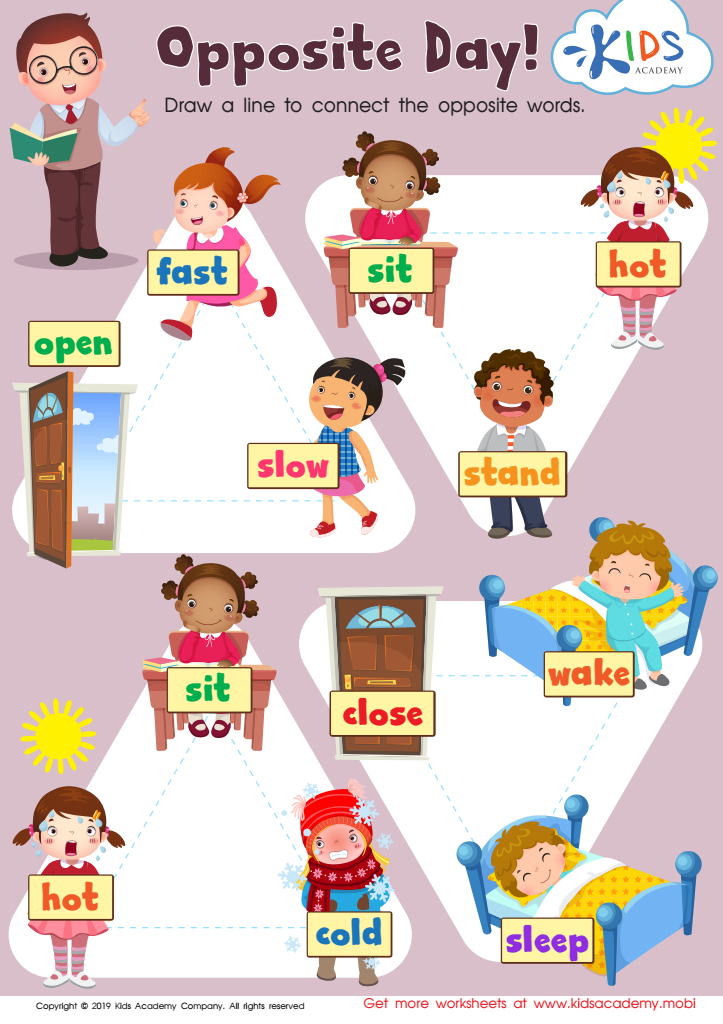

Opposite Day Worksheet


Rhyming Words Worksheet
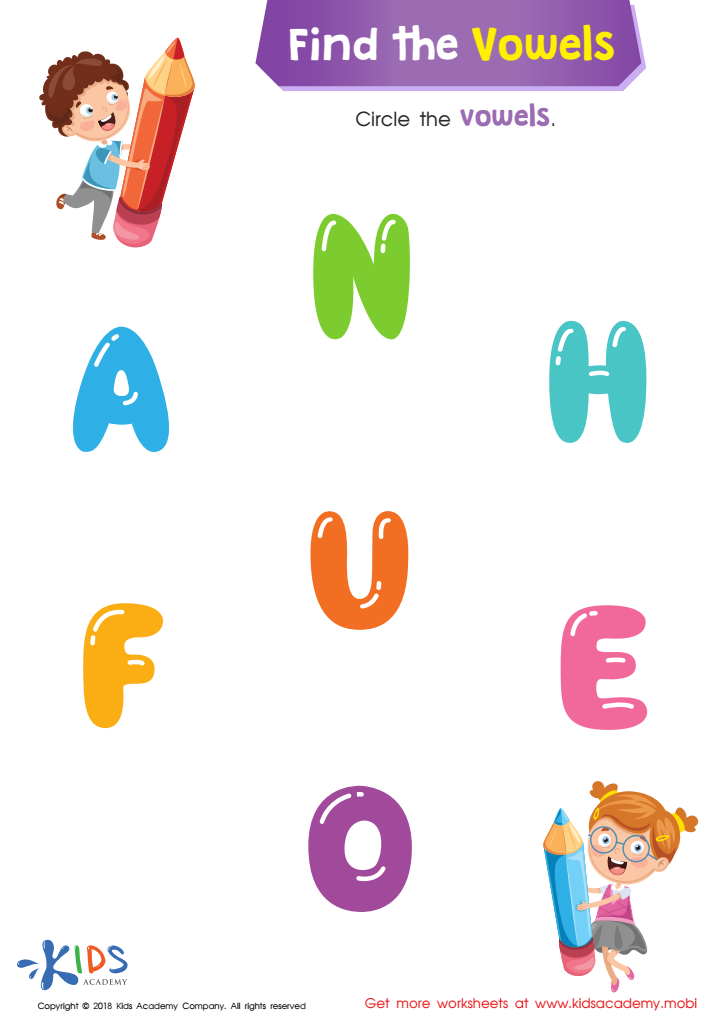

Find the Vowels Reading Worksheet
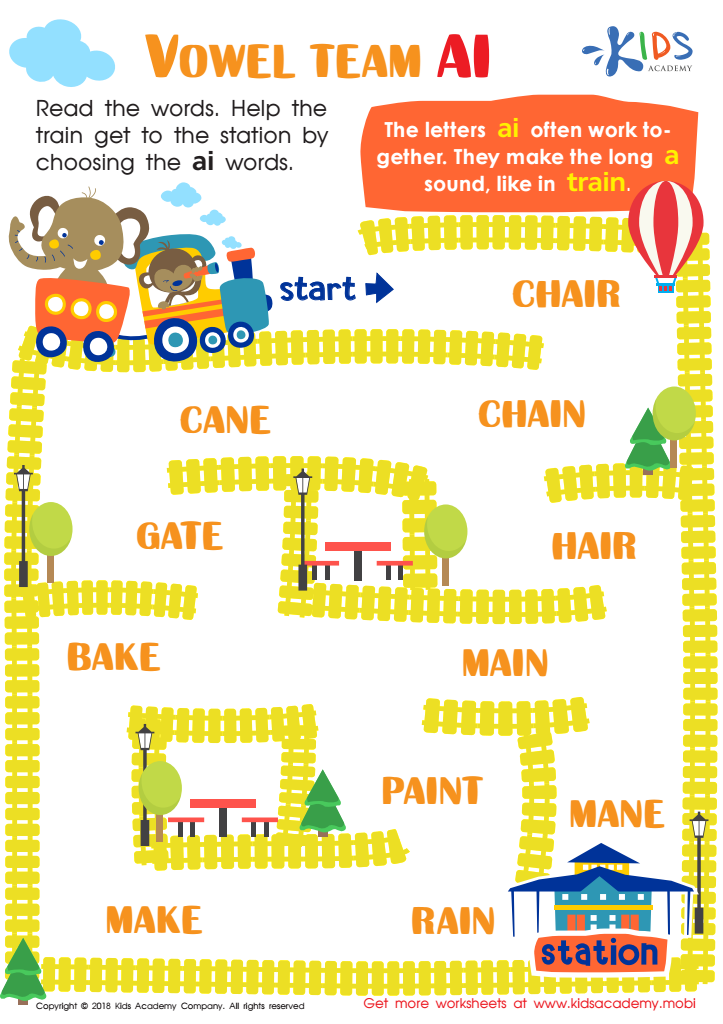

Vowel team ai Worksheet
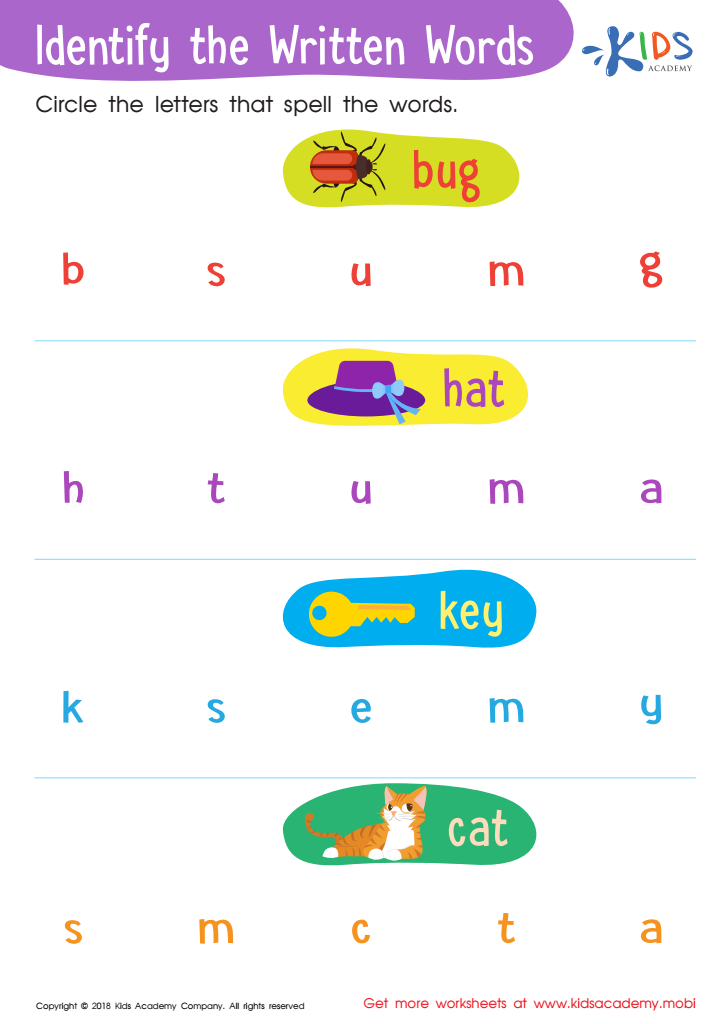

Identify the Written Words Worksheet
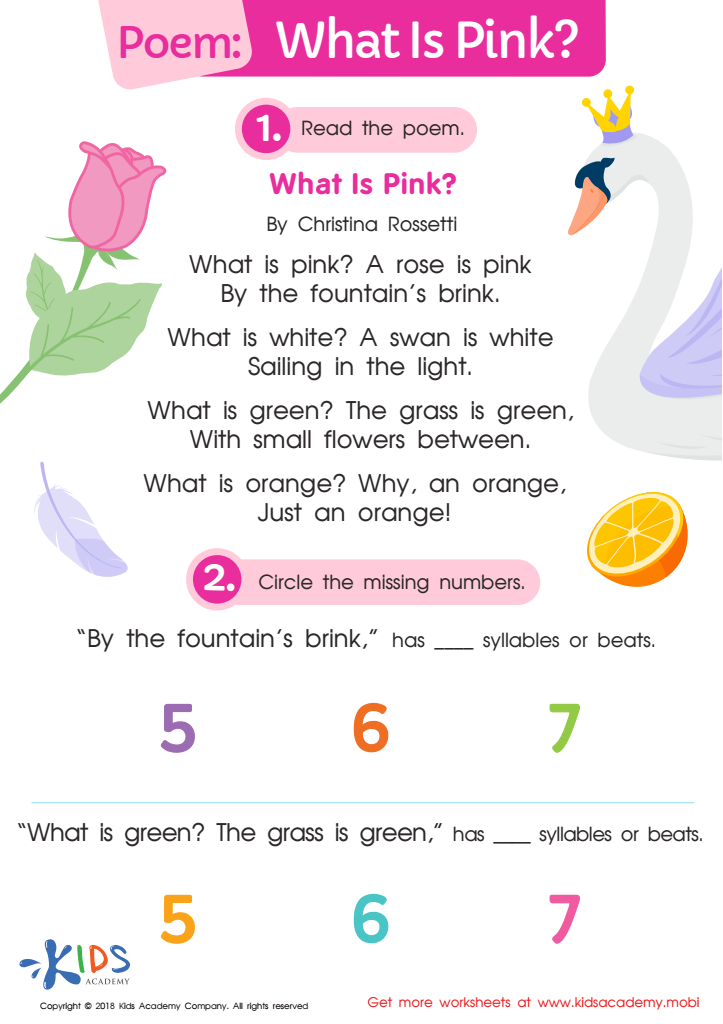

Poem: What Is Pink? Worksheet
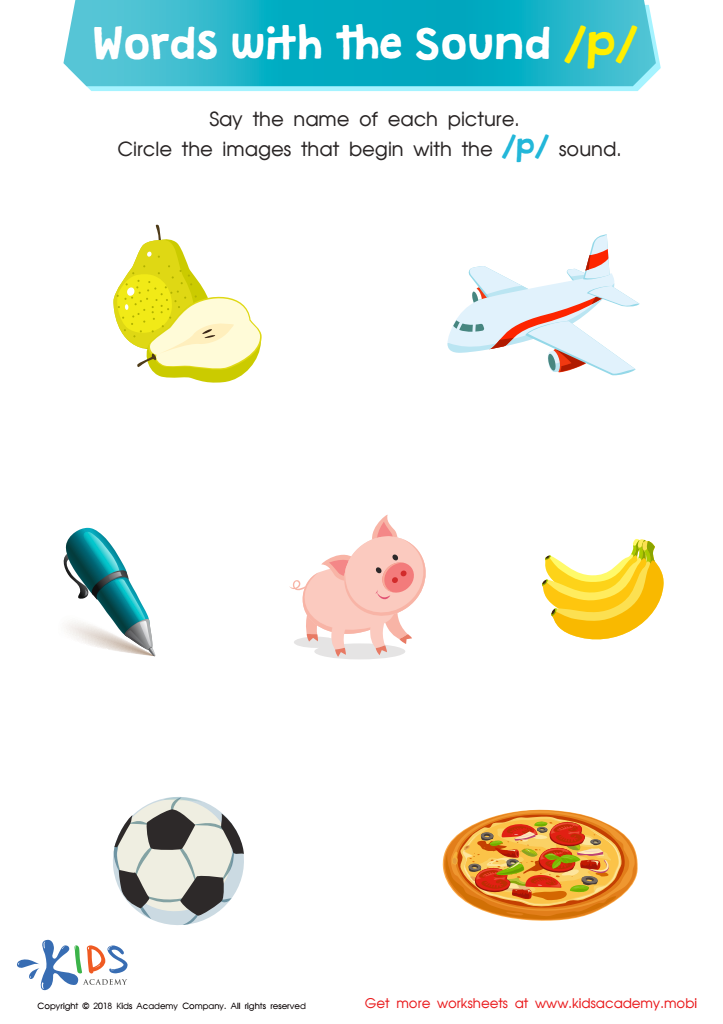

Words with sound p Reading Worksheet
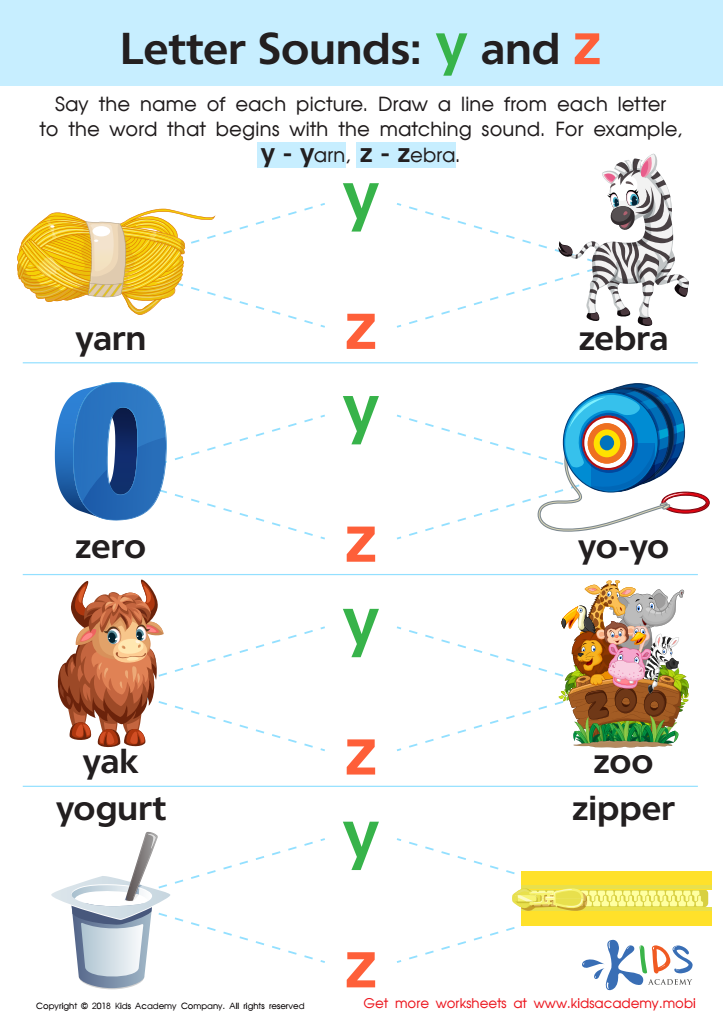

Letter Y and Z Sounds Worksheet
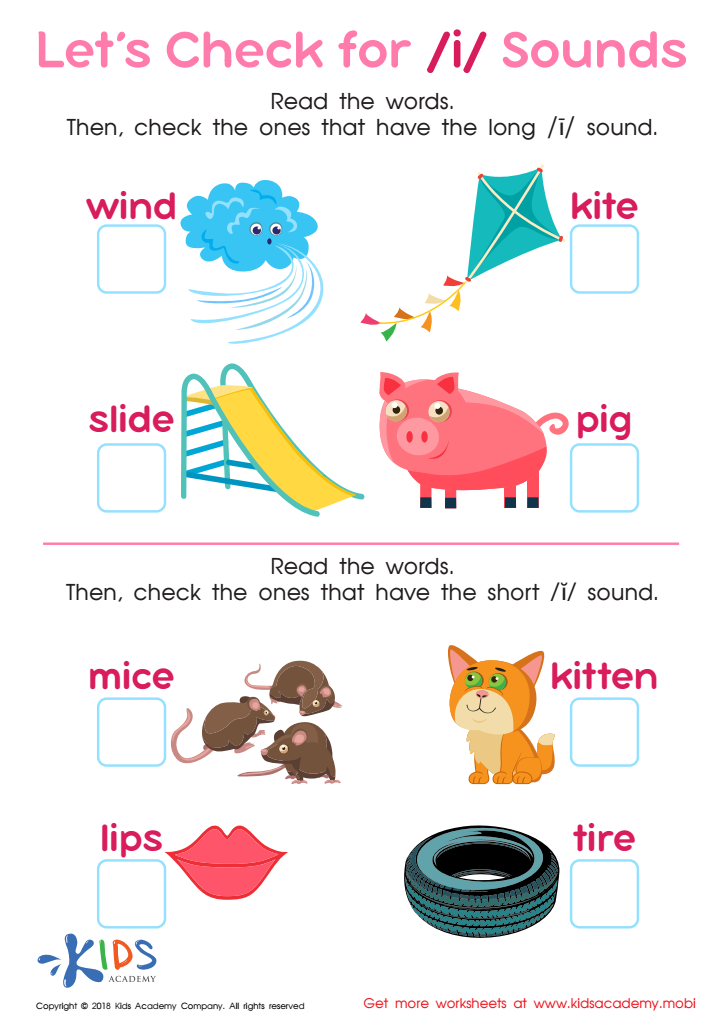

Let's Check for «i» Sounds Worksheet
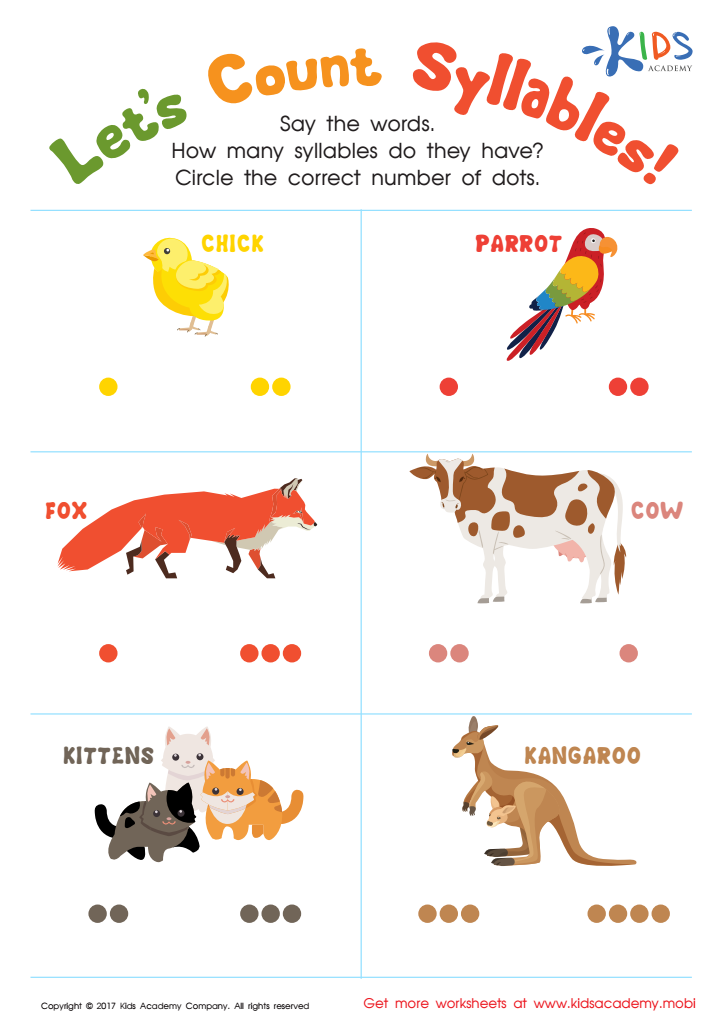

Lets Count Syllables Worksheet
Improving reading skills for children aged 5-9 is critically important for their overall development and future academic success. During this foundational age, children are in a crucial stage of developing their literacy skills, including recognizing letters, understanding phonetics, and beginning to read simple texts. Strong reading abilities enable children to comprehend stories, follow instructions, and engage more fully in classroom activities.
For parents and teachers, focusing on reading skills can foster a love for learning and a curiosity about the world. Children who are proficient readers display improved cognitive abilities, such as enhanced concentration, better memory, and stronger analytical skills. Well-developed reading skills also boost a child’s confidence and encourage independent learning initiatives. Moreover, literacy is closely linked to other subjects, including math, science, and social studies, making it an essential cornerstone for holistic educational development.
Additionally, improved reading skills contribute to better communication pathways. Children who can read well tend to have richer vocabularies and improved language skills, which allow them to express themselves more clearly and understand others effectively. Ensuring that children become competent readers by age 9 sets them on a positive trajectory for future academic achievements and personal growth. Parents and teachers, therefore, play a pivotal role in nurturing these skills through engaging reading activities, supportive learning environments, and continual encouragement.
 Assign to My Students
Assign to My Students


















